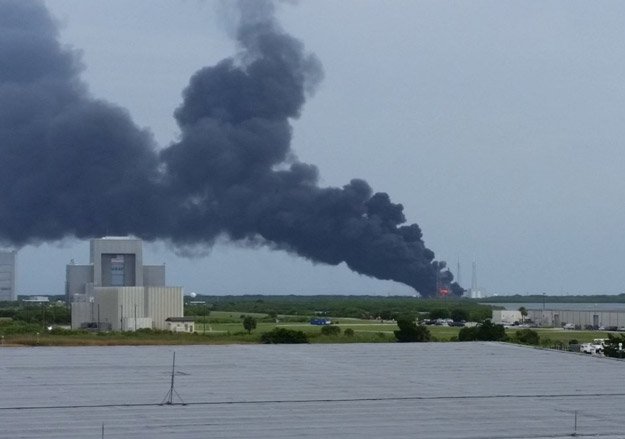Elon Musk Offers Icy Explanation For Spectacular SpaceX Falcon 9 Explosion
SpaceX has been flying so high in 2016 that its spectacular Falcon 9 explosion came as quite a shock to many in the space industry. There has been much conjecture regarding the explosion, including several conspiracy theories. SpaceX CEO Elon Musk recently stated that his company has discovered the root cause of the failure, solving the “toughest puzzle” it has ever encountered.
The explosion occurred on September 1st in Cape Canaveral, Florida. The rocket was supposed to launch Facebook's first satellite for use with its Internet.org initiative. Although the craft was destroyed, thankfully no one was injured. SpaceX has sifted through 3,000 different channels of telemetry and video data in order to understand what went wrong.

So, what exactly happened? According to Musk, the problem “basically involves liquid helium, advanced carbon fiber composites, and solid oxygen. Oxygen so cold that it actually enters solid phase.” SpaceX rockets have three carbon fiber composite liquid helium pressure vessels that sit inside an upper oxygen tank. The upper oxygen tank is filled with liquid oxygen propellant. The liquid helium pressure vessels are supposed to fill and pressurize the upper oxygen tank as the propellant leaves it during flight.
It is possible that if liquid helium was used in the pressure vessels, the helium froze the liquid oxygen. The oxygen in turn reacted with the carbon fiber composite and caused an explosion. Liquid helium exists at -452℉ (-268.3℃ or 4.1 Kelvin) while oxygen solidifies at -361℉ (-218.3℃ or 54.8 Kelvin). According to Musk, the explosion was due to something that has “never occurred in the history of rocketry”.
SpaceX has not revealed any other details concerning the explosion, however, the company recently stated that it is working on improving the helium loading process. The company plans to be back in the air by mid-December, and plans on using Vandenberg Air Force Base in California or another launch pad at Cape Canaveral that the company leases from NASA.
The explosion occurred on September 1st in Cape Canaveral, Florida. The rocket was supposed to launch Facebook's first satellite for use with its Internet.org initiative. Although the craft was destroyed, thankfully no one was injured. SpaceX has sifted through 3,000 different channels of telemetry and video data in order to understand what went wrong.

So, what exactly happened? According to Musk, the problem “basically involves liquid helium, advanced carbon fiber composites, and solid oxygen. Oxygen so cold that it actually enters solid phase.” SpaceX rockets have three carbon fiber composite liquid helium pressure vessels that sit inside an upper oxygen tank. The upper oxygen tank is filled with liquid oxygen propellant. The liquid helium pressure vessels are supposed to fill and pressurize the upper oxygen tank as the propellant leaves it during flight.
It is possible that if liquid helium was used in the pressure vessels, the helium froze the liquid oxygen. The oxygen in turn reacted with the carbon fiber composite and caused an explosion. Liquid helium exists at -452℉ (-268.3℃ or 4.1 Kelvin) while oxygen solidifies at -361℉ (-218.3℃ or 54.8 Kelvin). According to Musk, the explosion was due to something that has “never occurred in the history of rocketry”.
SpaceX has not revealed any other details concerning the explosion, however, the company recently stated that it is working on improving the helium loading process. The company plans to be back in the air by mid-December, and plans on using Vandenberg Air Force Base in California or another launch pad at Cape Canaveral that the company leases from NASA.

